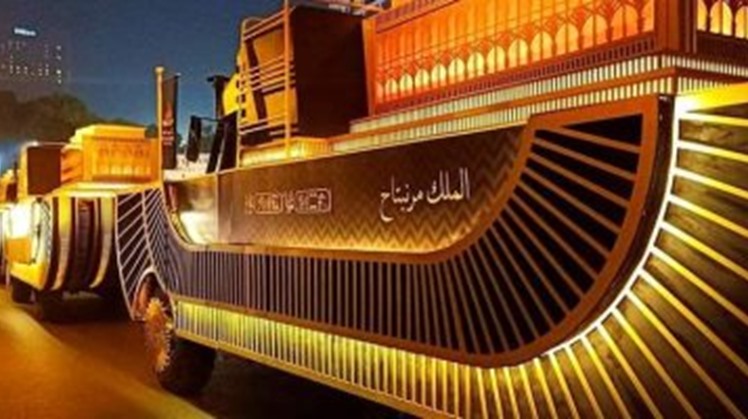A global moment that everyone awaits, which is the moment of the start of the procession of royal mummies from the Egyptian Museum in Tahrir, heading to their permanent residence in the National Museum of Egyptian Civilization, through a huge procession of 22 mummies of the ancient kings of Egypt, within the framework of the directives of President Abdel Fattah El-Sisi, to complete the archaeological and cultural activities of the world This is in a way that is consistent with the greatness and nobility of the ancient Egyptian civilization, and highlights the state's ongoing efforts to develop and modernize Cairo and other ancient cities.
How will the scene be? The scene begins when the door of the main museum inside is opened, where 22 kings and queens come out at night, to carry mummies on carriages decorated in the Pharaonic style, to carry the kings in glass boxes specially prepared for them, in a certain degree of preservation.
A group of individuals dressed in elegant Pharaonic clothes and a number of cavalry go next to the carriages when they set off, and before the motorcade moves, 21 shots are fired in salute to the great Kings of Egypt, then the cars exit one after the other from the museum gate in a circular motion to exit from the main door of the external museum to go to Tahrir Square It revolves around the obelisk.
At the same time, the obelisk is lit in Tahrir Square and the buildings around it, so that the procession runs along the Nile River, and during the course of the procession the world notices the uniformity of the color of the paints and destinations of the buildings located on the way by transporting the mummies.
After walking from the Ain al-Sira lake road, which has been developed into a tourist attraction, the mummies arrive at a permanent display place in the National Museum of Egyptian Civilization, to settle inside a dedicated hall called the Mummies Hall, and 22 royal mummies are transferred, including 18 mummies to kings, and 4 mummies to queens who are they. King Ramses II, Ramses III, Ramses IV, Ramses V, Ramses VI, Ramses IX, Tuthmosis II, Tuthmosis I, Thutmose III, Thutmose IV, Sqnin Ra, Hatshepsut, Amenhotep I, Amenhotep II, Amenhotep III, Ahmose Nefertari, Merit Amon "Siptah, Merenptah, Queen T, City I, City II."
 Sun, Dec. 13, 2020
Sun, Dec. 13, 2020